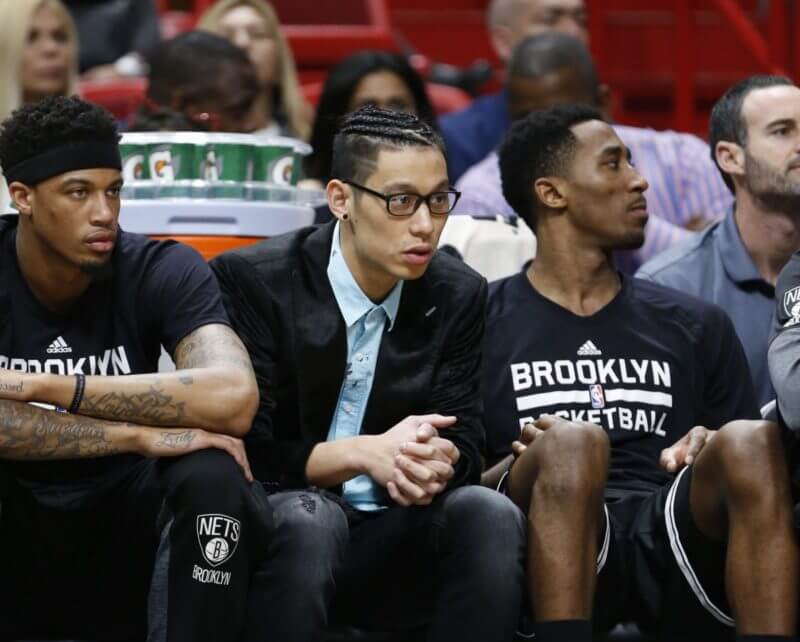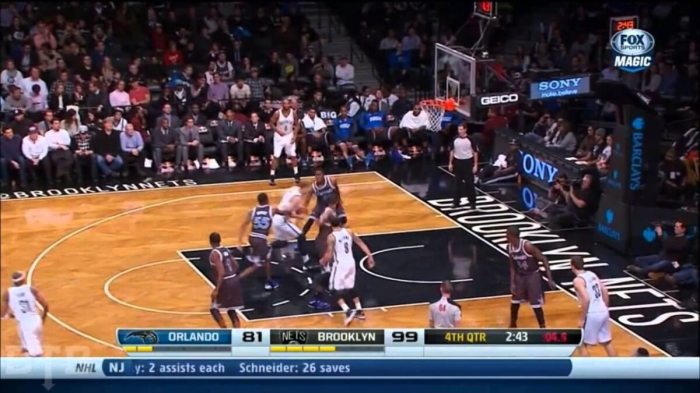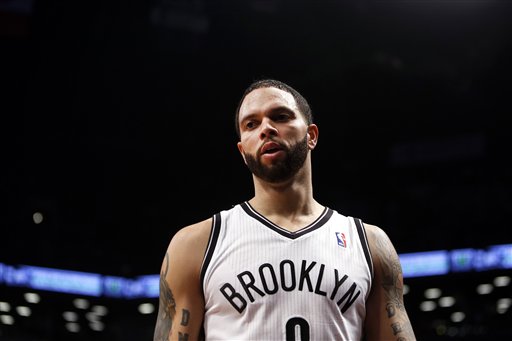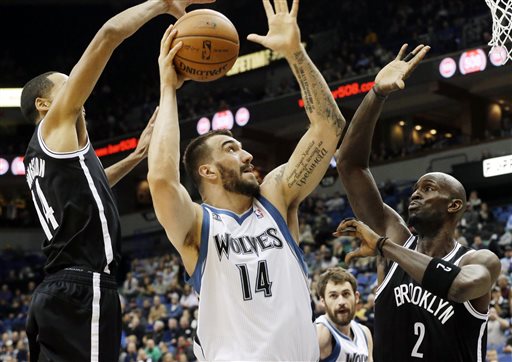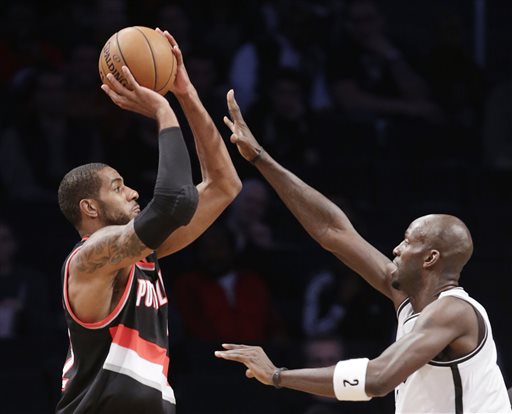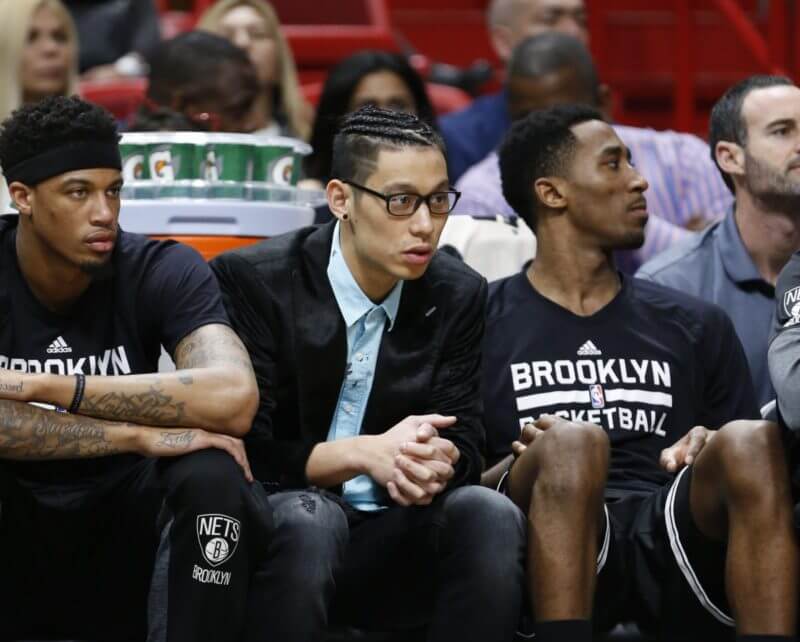
Analyzing the Nets’ Offensive Woes
Previously, I deconstructed Kenny Atkinson’s offensive system and influences in his first season as the Brooklyn Nets’ head coach. When it’s run successfully, it’s a system that gets everyone involved and works for open looks from the perimeter and easy buckets at the rim. The Atlanta Hawks, under Mike Budenholzer, have built a consistent winner using a similar system as today’s Nets use. Without a true superstar, the Hawks’ system maximized the talent of their core.
To this day, Atlanta is still a top Eastern Conference team, even with an overhauled roster. Another Atkinson influence, Mike D’Antoni, is a Coach of the Year candidate this season. Steve Kerr comes from a similar coaching lineage as Atkinson and his team, the Golden State Warriors, has done OK too, I suppose. So, by signing Atkinson, the Nets should have an efficient, ball-swinging, Spurs-esque system with a touch of D’Antoni point guard whisperer magic, shouldn’t they?
*SPOILER* – They don’t. The 2016-2017 Nets are far from being Hawks North, the Empire State Warriors, or El Hijo Del Spurs.
The Nets are in the bottom five of several offensive categories. Take a look and you’ll quickly see why:
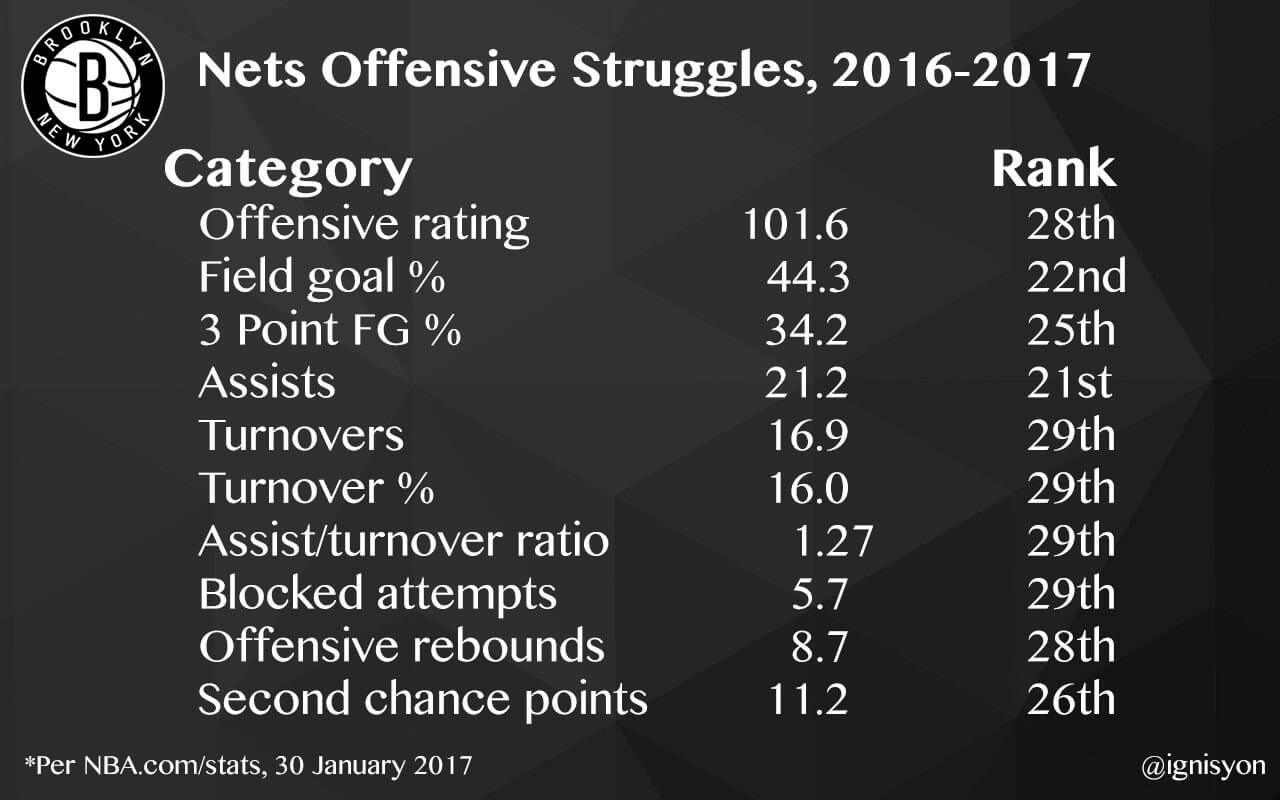
Even with these low-efficiency rankings, the team ranks high in several volume stats (three pointers made, three pointers attempted, and free throws made), which indicates the blistering pace they play and their Morey-ball influence. So, then, the Nets aren’t having issues taking shots or drawing fouls.
Even with a liberated, free-flowing offensive system, the Nets are still on pace to lose 60+ games once again. Obviously, the defense has been shaky, but the offense has also struggled. At times, the Nets play beautiful basketball, passing, driving, and cutting until they find an open shot. The team plays competitively for a couple of quarters, but then it just… stops. Completely. In Nets scoring droughts, ball movement dies, dribbling goes nowhere, and shots are forced. It’s puzzling at times to see the offense drop off a cliff.
Are there issues with the system?
The system itself is not the root of the team’s offensive woes. Running the offense relies on quick decision-making out of sets and, hypothetically, the offense should generate good looks on most possessions. The Nets have had major offensive lapses against poor defensive teams, not just elite defenses like the San Antonio Spurs, Charlotte Hornets, and Miami Heat. The team may still be learning the offense and the endless scenarios of a simple set and that’s OK — but just look at this breakdown of the 2013-2014 Hawks. Even with a team-oriented system, the Nets still face major offensive woes.
Cue the torture film!
Poor Ball Movement
Kenny Atkinson’s system encourages passing and cutting, that much is clear. The Nets have had possessions and games where they move the ball well. But often times, the team initiates the offense, makes one pass, and the ballhandler either shoots immediately or drives to the rim for a contested layup or turnover. This style may stem from of Weak, Strong, or Horns sets. The Nets’ best offense comes when they swing the ball side-to-side, sliding the chess pieces.
The Hawks show that here:
https://gfycat.com/EthicalZanyHummingbird
They start off from the Strong-side set and swing it to Demarre Carroll off of the double stagger screen, a staple of that system. Carroll dumps it to Mike Scott in the pinch post and finds Kyle Korver on a drag screen. Korver takes a few dribbles into the lane, thus leaving Carroll open for a corner three-pointer. There were 6 passes in that set, with off-ball screens on each swing.
Of course, the Spurs move the ball well too:
But they’re the Spurs! It’s in their cultural DNA — Nets fans are hoping Atkinson inherited the good genes.
Cutting down on ball movement is understandable if a player is hot or if the defense plays the passing lanes well. But the one-and-done possession occurs too often. This happens with Spencer Dinwiddie here off of an offensive rebound:
Here, Sean Kilpatrick cuts to the middle on a Strong set, cutting the movement that would have initially gone to Trevor Booker. He takes it to the lane, lofting a floater over LaMarcus Aldridge with 16 seconds on the shot clock. In that play, Kilpatrick could have looked for secondary off-ball movement, but he opted for an early shot.
Next, Randy Foye is the ballhandler off of a Quincy Acy screen. Acy slips the screen and pops to the top of the key. Foye barrels into the lane and into Acy’s defender, the 7’0 Dewayne Dedmon. He loses the ball with 15 seconds left on the shot clock. This possession had no passes, a straight drive — luckily, however, not a turnover… yet.
In a similar sequence against the Hornets, Foye denies an Acy screen and gets past Marco Belinelli. He drives into the lane where the help defender, Marvin Williams, contests straight up. Rondae Hollis-Jefferson was the open corner man and although he may not be a shooter, RHJ is shifty enough to drive and dish, especially with so much time (18 seconds) on the shot clock.
Poor ball movement is not an individual issue. It’s a team-wide ailment.
Ineffective Passing
Even when the Nets do move the ball, the passes may not be effective, which is certainly a problem in an offense like this. When you compare the Hawks and Nets in these instances, once again, you see one really well-defined offense versus a young, still learning version — but it’s something to strive for undoubtedly.
https://gfycat.com/NeedyDelectableAsiaticwildass
Kyle Korver commands team-wide attention upon receiving the ball. It forces the defense to keep their eyes locked on him, allowing the offensive players space to breathe. Nothing fancy there, just strong passes creating movement. Obviously, skilled offensive players command attention. The Nets may not have players as magnetic as Korver, an assassin, but their passes leave a lot to be desired.
Per NBA.com, the Nets are ranked 4th in the NBA in passing, with 321.4 passes per game. The team makes lots of passes, yet rank 20th in assists. Compare that to the Spurs, who rank 4th, and the Hawks, who rank 6th, in team assists with lower passing totals. That puts the Nets at 24th in pace-adjusted assist-to-pass ratio. The weak passes are paired with poorer off-ball movement that drains the shot clock, ultimately leading to ineffective isolation plays. Even in Budenholzer’s first season as head coach, his 38-44 Hawks were second in assists, only trailing the peak-level Spurs.
(The Kevin Garnett/Paul Pierce-led Nets were 24th in assists that year if you were wondering…)
The Nets also commit lots of turnovers and several come off of errors on lazy or misplaced passes every game. These passes may not be Shane Larkin tossing a simple pass into the stands one to two times a game, but they can be crippling to the Nets’ momentum on offense.
Against the Hornets, the Nets start the possession moving the ball well out of Horns, initiated by Bojan Bogdanovic. He draws defenders in on a drive, finding Acy, then Hollis-Jefferson on a mismatch. Acy sets a good screen on Nicolas Batum to get Bogdanovic back to the perimeter, but Hollis-Jefferson throws a lazy one-handed pass at the extended arm of Batum, causing a turnover. Credit Batum for his length and effort, but the pass by Hollis-Jefferson could’ve had a bit more behind it.
Another passing issue that leads to Net turnovers is committing to the air and this has been a huge issue for a couple of players all season. The player dribbles into the lane looking to shoot but sees no angle with a big looming down low — then what? The player desperately jumps and tosses the ball to a frozen teammate.
Bogdanovic does this next one coming off of Horns as ambling into the lane. Cody Zeller contains the drive well, Bogdanovic jumps and fires it overhead to Foye in the corner, but the pass is intercepted. Committing to the air made the pass predictable. It gave the defense time to see where Bogdanovic was looking and cause rotation for the interception
Kilpatrick commits to the air and pays the price here…
And Isaiah Whitehead does the same when faced with a double against Minnesota…
Telegraphed passes lead to terrible turnovers. Say that five times in a row.
Frantic Pace
One tenet of the Atkinson system, adapted from the Pacefather, Mike D’Antoni, is early offense. The Nets have held down the RT button all season long, leading the NBA in pace. Good offense early in the shot clock can catch defenses napping or create mismatches on unprepared defenses. The Nets have been moderately successful at getting fast break points, ranking 13th in the league. But their transition and early offense decisions have been a bit too erratic at times, with some possessions seemingly out of control.
Take a look at these Nets early offense possessions, first with Trevor Booker’s one-man show:
Followed up by a quick trigger finger from Bogdanovic…
Think to yourself: What Would Mike Do? Would D’Antoni want those shots? Would he applaud and tell the players to keep working? Or would he turn around and walk towards the bench with his arms folded, his go-to move, and fume?
All those possessions ended early in the shot clock and we’ve seen Atkinson call an angry timeout when players take these shots, but those plays occur on a game-to-game basis. Early shots are like a drunk text: when you commit to it, you don’t think it’s a bad idea and see only the positives — but, upon failure, you end up with nothing but embarrassment.
There are ways to play fast without actually being fast, pace wise. Within a halfcourt set, the offensive players can cut and screen hard, firing passes to leave the defense scrambling. The Spurs (yes, them again) do this well with their bench unit:
They use up a lot of the clock but the movement is quick, controlled, and precise. The Spurs are moving quickly, but they make precise passes, and look for a shot instead of heaving one up once they see the clock running down. The Warriors play with D’Antoni speed and Gregg Popovich movement and move the ball even faster than the Spurs at times. The players don’t have to fire away early in the shot clock if the ball moves faster than the defense.
If these are the only issues, why hasn’t the team won more games?
The woes detailed here are from the current on-court product. There still are glaring holes in the roster makeup, whether it is by injury (ugh, Jeremy + Greivis) or by missed offseason moves — i.e. you’d still look great in black and white, cc: Allen Crabbe, Tyler Johnson, Donatas Motiejunas, Kent Bazemore, Marvin Williams, and Sergio Rodriguez. There are also some offensive miscues that are indefensible and this was the case for the entire Nets squad in the first quarter against the Minnesota Timberwolves last Saturday.
As many have stated this season, the Nets don’t have an effort issue; they have a talent issue. The team lacks a true playmaker, key to any successful offensive system, and an interior banger, among other things. While the team may be fighting, the players may stand no match against the NBA’s upper class and it makes for frustrating basketball as the losses pile up. This season has been a mental test for the entire organizational bubble, on-court and off.
There will be frustration, head scratching moments, and fourth quarter collapses — but the players still compete every night, no matter who the opponent. For the Nets, #ThisIsProgress. We may as well #EmbraceTheFuture for now.
(Can the Nets marketing team start a trendy hashtag going soon? Please?)

